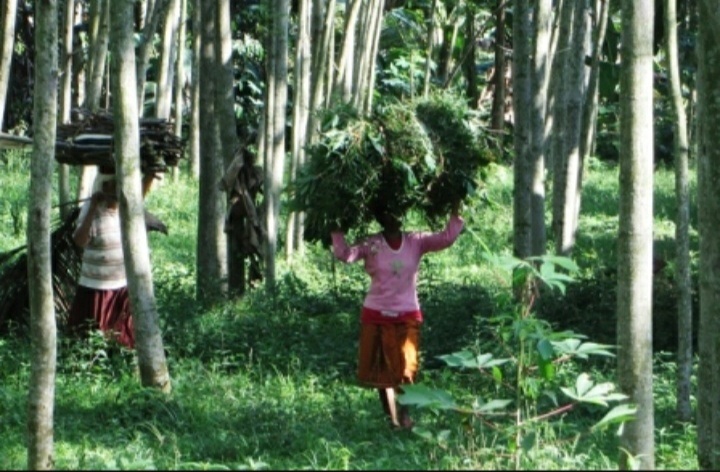
Prof. Dr. San Afri Awang, as the Professor of the UGM Faculty of Forestry, stated that the limited land resources still become an obstacle in Indonesia. This condition is due to the increasing population is not balanced with the availability of land for agriculture that remains to decrease. If we as humans do not anticipate it, it will threaten national food sovereignty.
“Even there is a prediction that there will be a food shortage of 70 tons in Southeast Asia until 2025,” he explained in a webinar. This webinar entitled the Contribution of Social Forestry to Indonesian Food Sovereignty organized by the Center for Community Forestry Studies, Faculty of Forestry UGM, on Thursday (17/9).
Responding to these conditions, the government has made a social forestry policy to support food sovereignty. Accordingly, to support this policy, the government has provided a land area of 12.7 hectares.
For the realization until May 2020, an area of 4.147 million hectares in Java and outside Java is around 3.27 percent of the total area of social forestry land granted. Meanwhile, land for the object of agrarian reform (TORA) from the forest area is 4.1 million hectares.
He said the social forestry scheme hopefully could produce around 11 million tons of rice in a land area of around 2.7 million hectares. This figure is equivalent to 30-33 percent of national rice production.
Furthermore, he said that the scenario could be realized if there were enabling factors. One of them is the legal certainty of social forestry licensing for forest farmers. Then, facilitate social governance, production, institutions, and definite capital and marketing. Apart from that, rice prices that benefit farmers, adequate water for crops, and government policies that allow planting food crops for a while and cooperation between institutions are also determined.
Researcher at the Ciamis Agroforestry Technology Research and Development Center, Dr. Sanudin, S, Hut. M.Sc., on that occasion, explained the potential of social forestry in supporting food security through agroforestry. Various innovations through scientific interventions on existing agroforestry systems/practices can be carried out to obtain greater benefits.
He gave an example that one of the successful-developed innovations was an agricultural system that combined MPTS (multi-purpose tree species) and understorey trees. This practice has been implemented in Nusa Tenggara.
Meanwhile, the Chairperson of the Indonesian Social Forestry Community Movement, Siti Fikriyah Khuriyati, S.H., M.Sc., said that social forestry is one of the agreements in resolving existing land conflicts with forest communities. GEMA PS has resulted in facilitating the community to obtain legal certainty through advocacy and empowerment of organizations, individuals, and knowledge.
Sasmita Nugroho, SE., from the Officials of the Directorate of Environmental Impact Prevention of Regional and Sector Policies of the Directorate General of PKTL, KLHK, revealed the urgency of the support capacity of national water availability to support national food security. The carrying capacity of water is a vital point in determining the potential for national food production.
Author: Ika
Photo: agroindonesia.co.id
Translator: Natasa A

